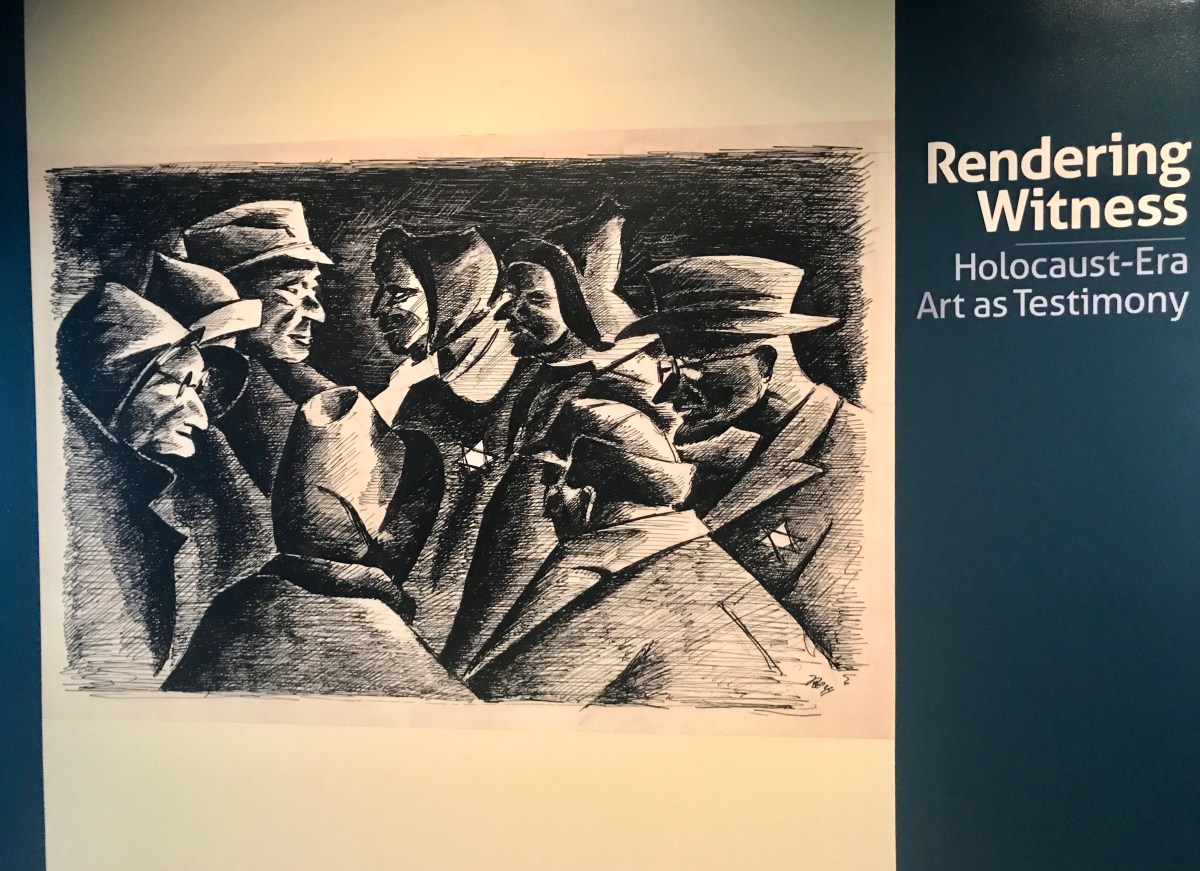A new exhibit in Lower Manhattan features drawings made during and shortly after the Holocaust by people who experienced its horrors.
“Rendering Witness: Holocaust-Era Art as Testimony,” opens Jan. 16 at the Museum of Jewish Heritage, at 36 Battery Place. It includes 21 artworks from the museum’s collection, 14 of which are on display for the first time.
Many of the works were made during the Holocaust, in Czechoslovakia, Germany, Hungary and Poland, largely in ghettos and a slave labor camp. Other drawings were made just after the Holocaust ended.
The exhibit is divided into sections, noted curator Michael Morris, including depictions of ghetto living spaces, deportations, scenes at Auschwitz, portraits, and remembrance afterwards.
The inspiration for the exhibit came from a request from the Drawing Center in New York, which requested to see the museum’s collection of drawings to potentially borrow for a show. Morris realized when going through the collection that there could be an exhibition focused on the artwork.
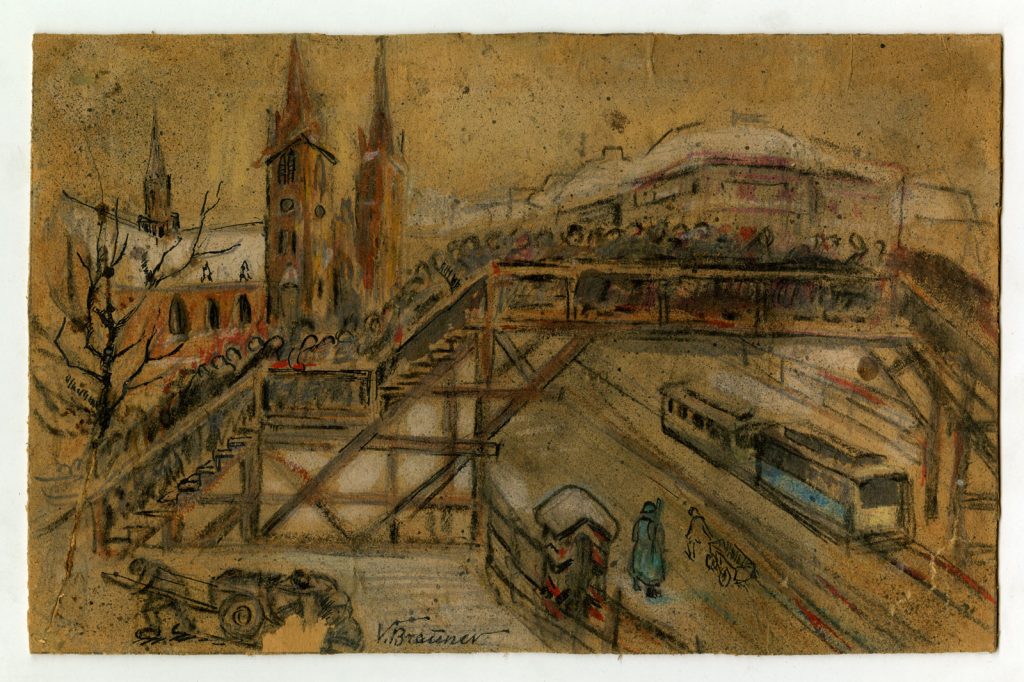
There were 380 works to choose from. “There were a handful I thought had to be in the show,” Morris said a day before the exhibit’s opening.
These included Eight Men in Coats with Stars, by Peter Loewenstein, 1944, which depicts a close-up look at a group of people during the Holocaust. Morris chose an enlarged version of this image to be at the entrance to the exhibit.
“I felt like it conveyed the weight of the Holocaust without showing anything graphic,” Morris said of the Loewenstein artwork. Loewenstein was deported in 1944 from the Terezin Ghetto in Czechoslovakia to Auschwitz, where he was murdered.
Another essential piece, Morris said, was Returned Deportee, by Alfred Lakos, 1945. It shows an unnamed survivor who looks emaciated and sits in a chair. Lakos was conscripted into a Hungarian Labor Battalion during World War II, and made drawings of the Holocaust in Hungary. He survived and afterwards made drawings of his wartime experiences.
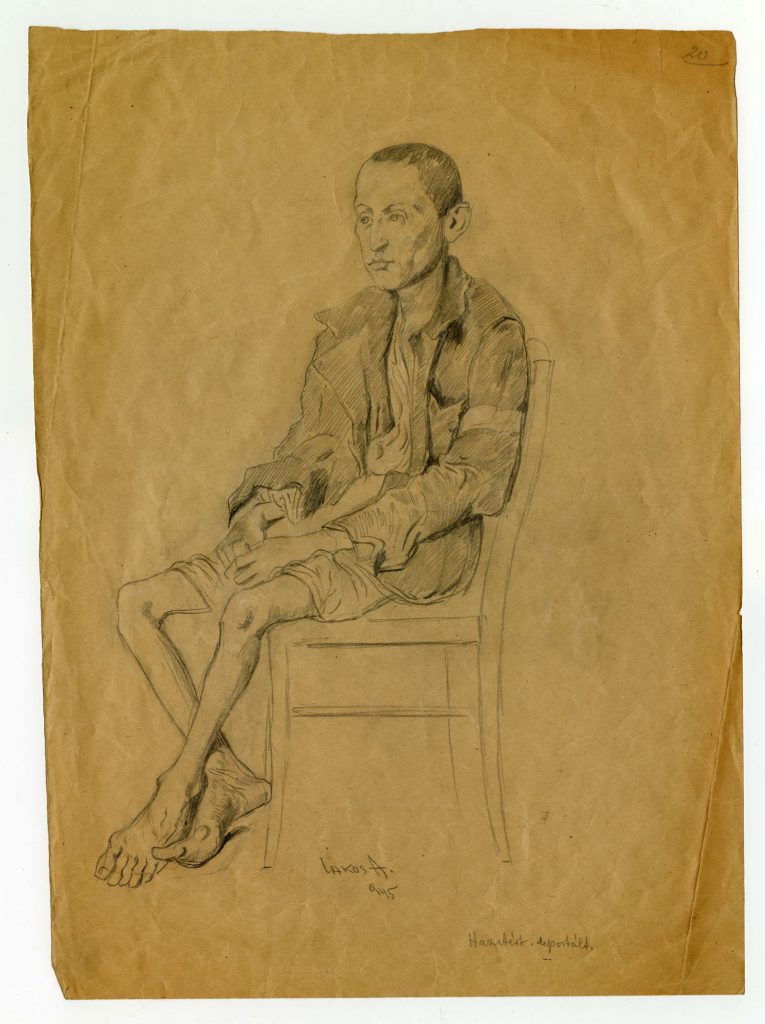
Morris said three works by Alfred Kantor depicting scenes at Auschwitz were also essential for the exhibit. Kantor was a well-known artist who was deported to Auschwitz in 1943. While there, he would memorize scenes during the day and then draw them at night.
“He’s a very essential artist and they’re very well done,” said Morris of Kantor’s works, which hadn’t been shown before. “So I thought it would be a great way to put them on display.”
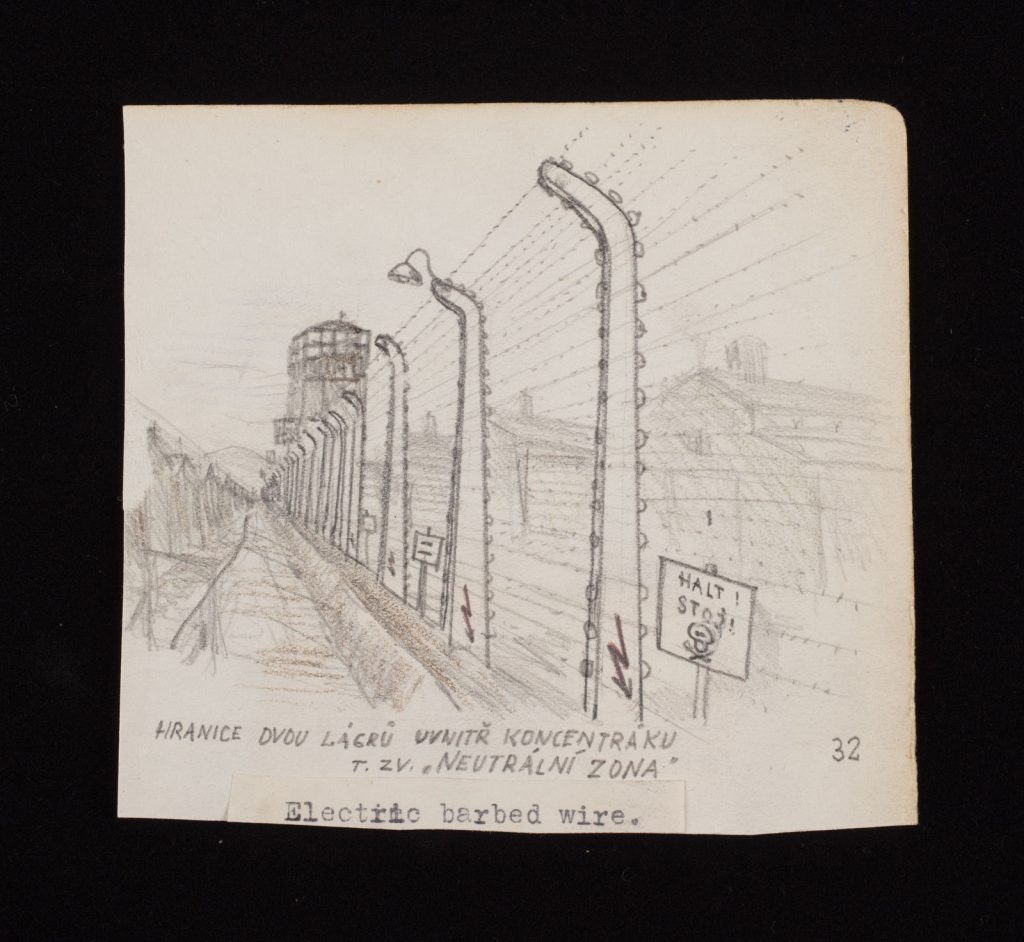
Morris noted that most of the exhibit’s walls are blue, except for the black wall where Kantor’s Auschwitz drawings are shown. “It’s like the climax of the show that set it apart from the rest,” Morris said.
The exhibit focuses much of its attention on the artists and their Holocaust experiences. “Just as important as the art are the stories embedded within,” said Elyse Buxbaum, the museum’s Executive Vice President of Strategy and Development.
Another featured artist is Helga Weissova, who is now 90 and living in Prague. She was sent to Terezin at age 12, and was a budding artist. She brought art supplies with her, which lasted throughout her internment.
When Weissova snuck a drawing of a snowman to her father Otto, who was in a different barrack, he suggested to her, “Draw what you see.” Weissova followed the advice and would draw over 100 images.
Her drawings in the exhibit include Children’s Home L410, 1943, which depicts kids in barracks in the Terezin Ghetto. And Transport Leaving Terezin, 1943, shows armed guards giving orders to groups of people.
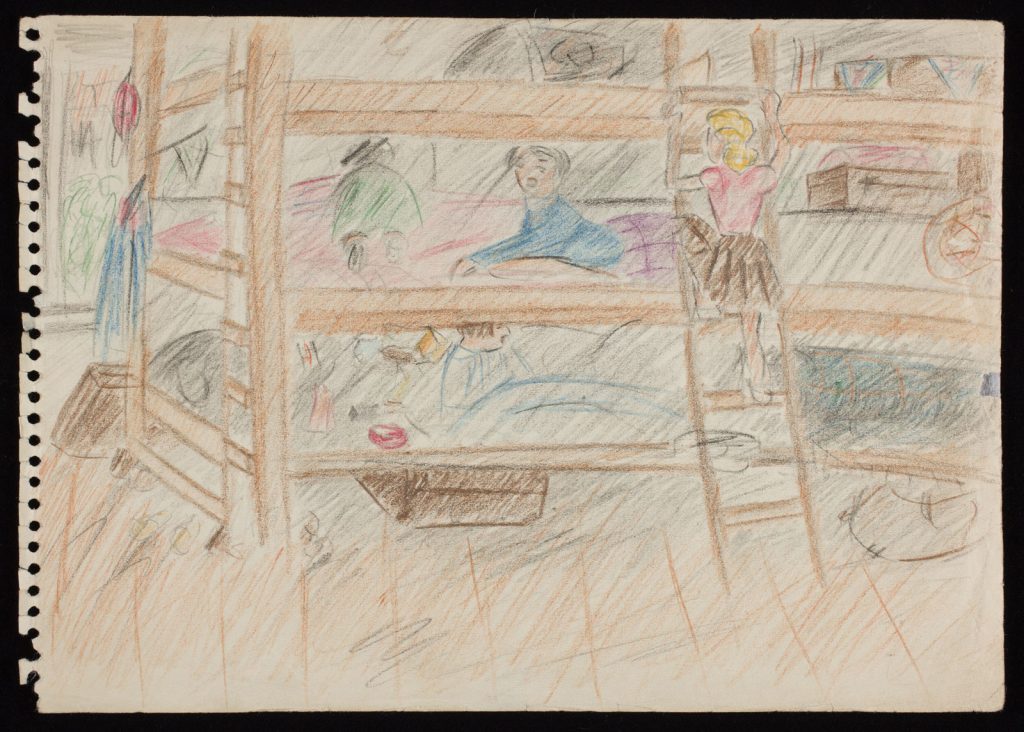
The exhibit includes quotes from Alfred Kantor, who would die in 2003 at age 79, about his art. One quote, from 1971, reads, “…I felt obsessed, driven in fact by the overwhelming desire to put down every detail of this unfathomable place [Auschwitz]. I began to observe everything with an eye towards capturing it on paper…”
The exhibit runs until Jul 5, 2020, and more information can be found at mjhnyc.org.



